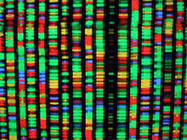See on Scoop.it – Bioinformática
Autodesk, a company which develops design software, produced a synthetic Phi-X174 bacteriophage, a virus that infects E. coli bacteria but is totally benign for humans.
The effort was a sort of scientific homage to the work of the J. Craig Venter Institute, which first produced the self-replicating synthetic virus back in 2003, following a more than five-year research effort. In Autodesk’s case, it took a little more than two weeks and about $1,000.
That achievement says a lot about how far the science of synthetic biology has come — and a lot about where Autodesk is going.
Samuel Viana‘s insight:
A AutoDesk, criadora do software de modelação AutoCAD, criou o seu primeiro vírus. Mas não é um vírus informático, como à primeira vista possa parecer, mas sim biológico, já que a Autodesk também se lançou neste campo de pesquisa já lá vão dez anos. Este vírus é capaz de infectar a "clássica" bactéria-modelo E. coli.
See on news.google.com







